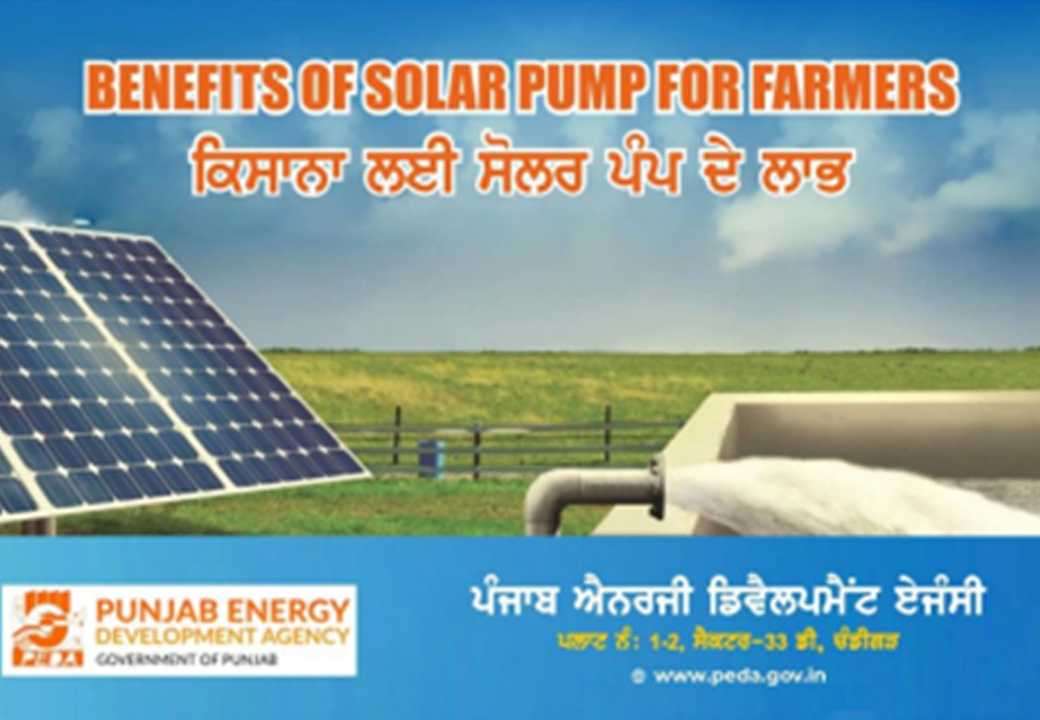Benefits of Solar Pump for Farmers

More than 300 million people in our country do not have access to electricity, which means the overall size of the entire population of the US. Increasing energy penetration has become an economic opportunity with companies providing off-grid or microgrid solutions.
These options help move rural customers away from burning relatively expensive fuels like kerosene and can provide basic energy services such as lighting and cell-phone charging, but they always provide enough electricity to meet economically productive needs. In India, more than 50% of the workforce is employed in agriculture, so there is a huge opportunity to provide more comprehensive electrification solutions to the needs of residential electricity, such as electric irrigation pumps.
Today, most Indian farmers usually depend on the monsoon to water the crops, however, irrigation can increase crop yields by up to four times. But irrigation requires energy. And currently, it is estimated that 26 million diesel and electric pumps run on Indian farms, making them the major technology offerings today. However, grid-connected pumps that rely on electricity face the same challenge as any other load connected to India's central grid: frequent outages. For farmers or labourers who require water during the day, the flow of electricity through the wires at midnight is not helpful.
Moreover, rainfed agriculture can be a high-risk undertaking, especially with changing rainfall patterns and high-value crops such as fruits and vegetables. According to the 2008 World Development Report, rainfed agriculture-fed crops are twice as productive, but many farmers do not have access to irrigation infrastructure, including moving water through nearby water sources and their fields Power to do is also included. Drip irrigation kits, with new economical photovoltaic panels and off-the-shelf, 12-volt pumps can be a cost-effective system for supplying water for irrigation. Solar-powered irrigation has the potential to dramatically increase income, especially for the most remote producers.
What are the benefits of Solar Water Pump?
Very Low Operating Cost
The main advantage of the solar water pump is that it uses sunlight at no cost. Just as solar water pumps reduce dependence on electricity or diesel, once installed, there is no recurrence cost of electricity or fuel.
Comparatively Low Maintenance
Compared to conventional water pumps, solar water pumps require very little maintenance. Solar water pumps have fewer moving parts than other water pumps, so they are much less likely to deteriorate.
Simple and Highly Reliable
Since there is less dependence on electricity and fuel, power cuts, low voltage, and single phase problems such as solar water pumps do not affect the work. In remote areas with irregular power supplies, these pumps are much more reliable than conventional electric pumps.
Environmentally Friendly
Other water pumps (diesel or propane-based) create noise and air pollution, while solar water pumps are environmentally friendly because they do not require any fuel to operate. Since these solar water pumps are powered by a conventional source of energy, they do not release any harmful substances that can cause serious issues such as global warming.
Financially Beneficial
Solar water pumps can be a blessing for Indian farmers. The solar water pumps can also be a source of income for the farmers. The farmers can sell surplus energy to the grid, along with using it for water irrigation. This is notable that a subsidy has also been announced for the farmers, by the Government of India.
Grid-Connected Solar Power Plants To Be Set Up Under Pradhan Mantri Kisan Urja Suraksha Evam Utthan Mahabhiyan (Pm-Kusum Scheme)
Ministry of New & Renewable Energy, Govt. of India had launched Pradhan Mantri Kisan Urja Suraksha Evam Utthan Mahabhiyan (PM-KUSUM) scheme for farmers for setting up of grid-connected solar power plants, stand-alone off-grid solar pumps and grid-connected solar pumps to provide energy security and raise their income. The scheme has three components A, B & C. Component-A (Setting up of Solar power plants):- Solar power plants of capacity 1MW to 2MW are to be set up by the Farmers, Panchayats, Co-operatives & FPOs and sell power to PSPCL.
Target allocated by GOI for F.Y 2021-22 = 220MW Status
- 225 grid substations have been selected by PSPCL for the installation of solar power plants.
- Tariff @ Rs. 2.748/unit has been notified by the Punjab State Electricity Regulatory Commission (PSERC) for the sale of power.
- The EOI Document has been prepared by PEDA.
- PSPCL has prepared the Power Purchase Agreement (PPA) document.
- Applications shall be invited from the farmers for setting up of these plants within the next few days.
Component-B (Setting up of off-grid solar pumps): - Under this component, off-grid solar pumps are being set up by the farmers for the replacement of diesel engines. Govt. of India and Govt. of Punjab provide 30%+ 30% = 60% subsidy to General Category farmers and 30%+50%= 80% to Scheduled caste category farmers.
Component-C (Feeder level solarization of grid-connected agriculture pumps):- Under this component, Grid-connected agriculture pumps are to be solarized under feeder level solarization by setting up centralized solar power plants for supplying power to the feeders. Govt. of India will provide a 30% subsidy for the implementation of the scheme.
Target allocated by GOI for F.Y 2021-22 = 25000 Nos. (54 MW) Status
- The scheme is being implemented in the State through the RESCO model.
- 65 Feeders had been selected by PSPCL for solarization of 25000 grid-connected agriculture pumps.
- The four years of energy consumption data of these feeders have been submitted to MNRE, GOI for finalization of CFA and the capacity of the solar plants to be installed for supplying power to the feeders.
- A tender document is being prepared and the tender shall be floated for setting up of solar power plants within the next few days after receipt of information from MNRE, GOI.

